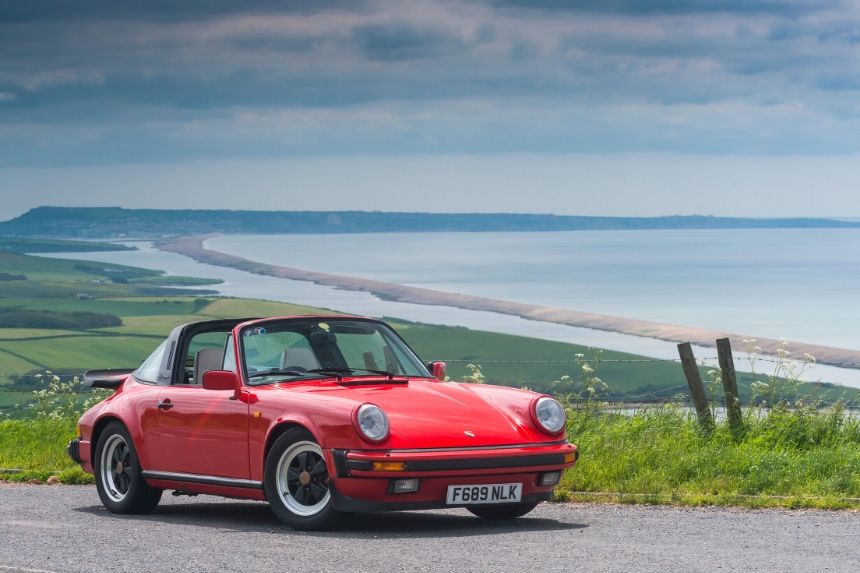
Porsche 911 Carrera 3.2 Buyers’ Guide
Written by Peter Morgan
Model history/Timeline
The auto industry model year (MY) runs from August 1 to 31 July, so a 1989 model could have been produced between 1 August 1988 and 31 July 1989.
1984 MY: Carrera 3.2 replaces 911SC with Coupé, Targa and Cabriolet body styles. Main difference is engine enlarged to 3164cc with Bosch L-Jetronic injection and ignition controlled by Digital Motor Electronics (DME). Max power is 231bhp. Special Wishes programme includes Turbo-Look Coupé.
1985 MY: New style slimmer front seat design, with option electrically adjusted height/recline and heating. Windscreen integrated radio aerial. Shorter gear shift travel. Special Wishes programme extended to include Turbo-Look Targa and Cabriolet (with stronger shells).
1986 MY: Bodyshell guarantee against rust perforation extended to 10 years. New dash panel with face level and side vents, better heat regulation. Seats lowered 20mm with longer front/back travel. Central locking standard. Turbo-Look becomes regular model (in UK known for one year only as 'Carrera with Sport Equipment').
1987 MY: Major upgrade to include G50 gearbox and hydraulic clutch operation. Rear fog and reverse lights integrated into rear reflective strip. Cabriolet receives powered roof. Turbo-Look now renamed 'Carrera Supersport'. Sport option Carreras now known as '911 with Sport Equipment'.
1988 MY: Fuchs alloys (15-inch standard, 16-inch option) replace 'telephone dial' cast wheels. Passenger door mirror standard (was option). Carrera Club Sport introduced (stripped out Carrera with option code M637, believed 50 UK Coupés). Anniversary Carrera (250,000th 911, 25 years of 911), all Marine Blue metallic with same crushed leather interiors and 'F.Porsche' monogram on front headrests (believed 50 to UK - 30 Coupés, 10 Targas, 10 Cabriolets).
1989 MY: Flashing red diodes in lock buttons. 16-inch Fuchs standard. 911 Speedster (from March 1989), in UK also available in Slant-Nose style - with 63, all narrow bodies - to UK).
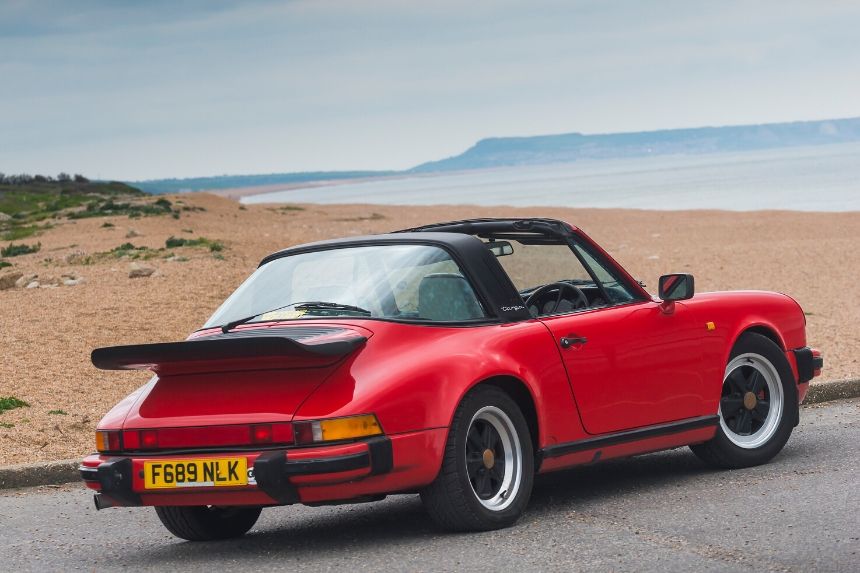
What's it like?
This 911 will appeal if you want to enjoy a classic Porsche that is full of idiosyncrasies but lacking the rough edges of earlier models.
Its driving character is defined by organ stop pedals that emerge from the floor, a slightly offset driving position, no power steering and a brake pedal that requires a knack to stop sharply without locking the front wheels.
It is a triumph of development over design, with torsion bar suspension remarkably suited to today's poor roads and fuel consumption that won't leave change out of 25mpg. But there will be a point when you suddenly appreciate what this car is all about. It could be the air cooled flat-6 echoing off a wall as you pass or the thrill of actually accelerating through a corner to keep the rear end planted.
With a solid reputation for quality and reliability, this 911 will do what ever you want every day and all day, but reveals its thoroughbred performance in an instant.
The only major spec difference through the 3.2's 6-year production was the change to the G50 gearbox for the 1987MY. The G50 has a more modern synchromesh and is identified by having reverse to the left and up. The earlier 915 gearbox uses the traditional Porsche synchromesh (and is in the same gearbox family as the 1960s race cars). The 915 requires a soft touch and for those who want it, is another source of classic driving enjoyment.
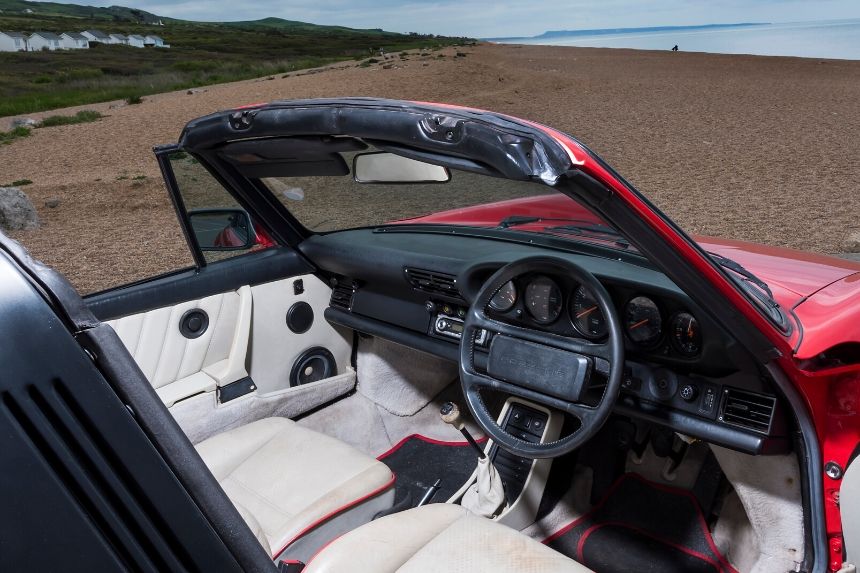
Which one should I get?
Once you've decided to go for a Carrera 3.2, the choice is simply down to budget - and that invariably is defined by the car's condition. The most sought after models are the 1987-89 Coupés and Targas. The 1984-86 Coupés and Targas (with the 915 gearbox) come next. There was no automatic option for the 3.2. The Cabriolets are something of a niche model in the UK, although they do have a small but ardent following. Their limited rearwards visibility is a negative.
The wide body models were only mainstream from 1987 and even then were limited production. These cars had no unique Vehicle Identification Numbers and fakes can be found, so care is required (see below). It's a fact that the wide body model appeal is largely all visual (accepting the stronger brakes and suspension), but the 'narrow body' cars drive just as well and are easier to squeeze into a small space.
The most desirable 3.2 is the Clubsport. This limited edition offers a sporting, stripped out 911 that despite an allegedly similar max power as the mainstream cars, offered the best driver's street 911 of the 1980s. The UK cars were probably around 25kg lighter, the blueprinted and chipped engine is more responsive and it benefits from a shorter shift on the gearbox.
The main attraction of the 1988 MY Anniversary 911 is the special crushed leather interior and its lustrous blue metallic finish. The Speedster is another 3.2 special that is all about appearance. The roof is very lightweight, while the large fibreglass cover remains in place all the time, denying use of the rear seats. All these 3.2 specials carry significant premiums in the marketplace.
Being some 30 years old, all the cars will have covered significant mileages. Low mileage cars (say those with less than 70K miles, will carry a significant premium and their value as a usable classic should be considered. The best buys are those cars with over 100K, but which have received ongoing restorative work to maintain them in the top 10%.
If you are looking for a car that needs no work at all, expect prices that will surprise you. There are no bargains at the top end of the market, although beware of speculators whose cars are either simply over priced or not as good as they should be.
Take on a project car only if you are good in the garage and have the essential determination to see a potentially long and costly rebuild through.
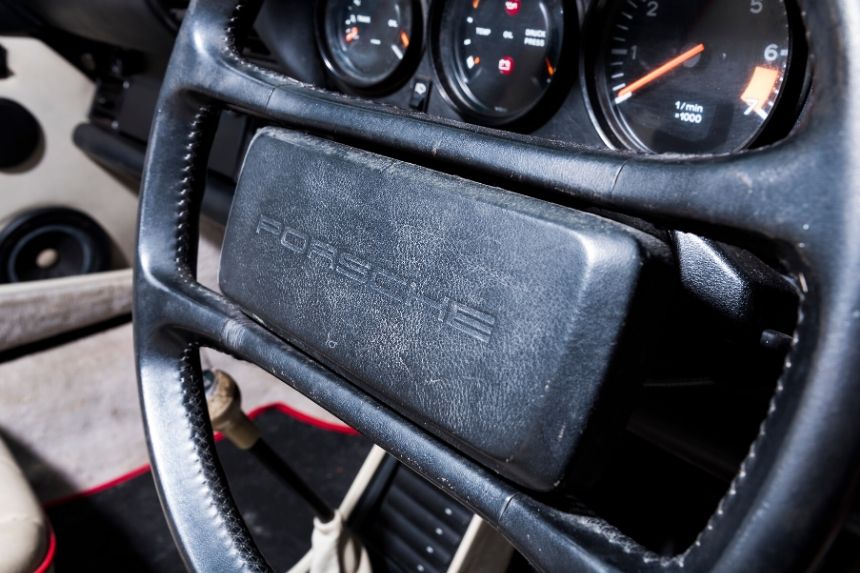
What are the running costs?
The Carrera 3.2 is relatively simple in terms of technology and its construction is very robust. Assuming a fundamentally sound car, it will be wear and tear that causes most bills.
The service regime for a little used classic car is based around the quality of the fluids. With a lightly used classic car (less than 3K miles a year), the requirement for an annual service is likely to be viewed more pragmatically and the intervals extended. Nevertheless, condensation can saturate key fluids on a lightly used car and lead to accelerated corrosion and wear, so care is required.
An engine oil change is likely to cost around £100 (all estimates are ex VAT) and a brake fluid change perhaps £75-100, so this preventative maintenance can be money well spent.
Shock absorbers will last around 20-25 years, assuming they haven't already started to leak. A replacement set will cost around £600, plus fitting. Don't forget to factor in the essential wheel alignment afterwards (cost perhaps £300). Replacement discs and pads will cost around £500 each axle.
The 3.2-litre engine should run to at least 125k miles without a cylinder head rebuild (for new valves, guides, etc). A poor service record can significantly shorten this. When the car won't start it can be the battery or the early Motronic system's Achilles heel - the DME relay. The replacement part costs around £65. A clutch can last up to 100K miles, but the rebuild cost can range from £750-£1100 depending on the gearbox type.
Interior repairs can be expensive with front seats costing £500-700 each to re-upholster, while a set of new carpets can run to £800-900.
Parts availability is very good through Porsche Classic (at your local Porsche Centre), but is a little expensive for some of the less frequently replaced items. There is a wealth of experience in maintaining these cars within the independent Porsche service network.
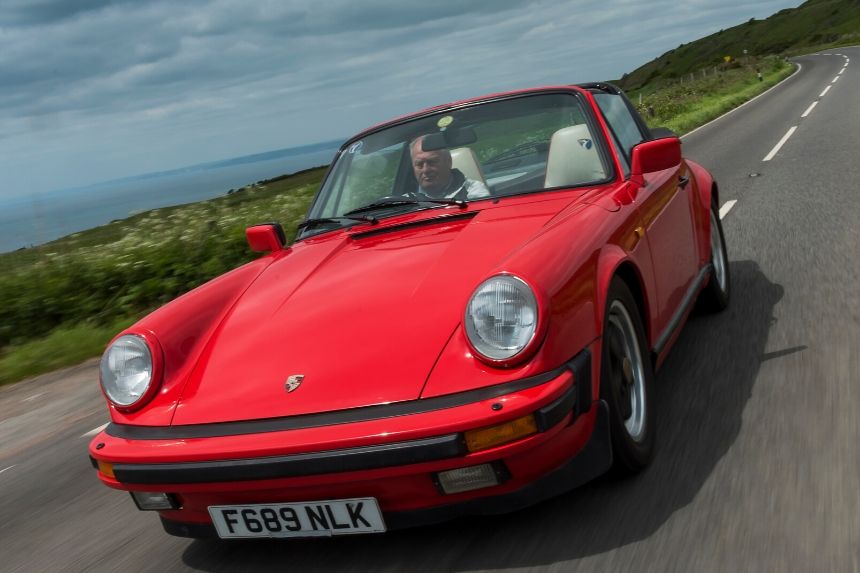
What should I look for?
While all the models received full bodyshell zinc coating, today that protection is likely to be aged to the point where corrosion can be a significant issue. Consequently, checking the bodyshell is essential. The external signs of a cheap restoration are uneven panel gaps, overspray on old black seals and uneven paint matching. A paint gauge can identify where extensive filler has been used (in areas such as the fronts of all the wings, the lower areas of the doors, C-pillars and under the rim of a Targa's rear window).
Estimating bodyshell repairs is very difficult until the outer wings have been taken off, but typically a car that needs new sills and reconstruction of each suspension corner/inner wing isn't leaving change from £15K. Full new paint can cost from £6k-10K depending on quality and the degree of previous paint removal/glass out and corrosion removal required.
An underbody inspection will check the integrity of the sills, the inner wings (including the rear inner wing front stiffeners - nicknamed the kidney bowls because of their shape - and the area ahead of the fuel tank). Use a blunt metal probe for the underbody inspection and be very wary if the underside is covered in fresh looking undersealer. Aged fuel and corroded brake piping can split with dangerous results. Cost could be £500-700 depending on the extent of the replacement.
Incidentally, the 1987-on models can be easily identified from the earlier cars underneath by their 4 hardpoints for garage ramps.
The suspension is likely to look time served, but the best measure of wear is to have an expert drive the car and listen for rattles and clonking noises.
Authenticity can be an issue when cars are advertised as Sports. A UK model Sport will have the black lip front spoiler, a rear 'whaletail' rear spoiler, Sports seats (more dished squabs than the basic seats) and Bilstein Sport shock absorbers. A well cared for car will have had the shocks replaced, so look for the yellow Bilstein Sport replacement shocks at the rear. Generally, the original standard Boges were black and the Bilsteins green.
An engine that smokes, doesn't start or run evenly should be ignored. Similarly if a 915 gearbox is difficult to select 2nd or 3rd gear, it probably needs a rebuild. Don't ignore a rusty exhaust.
Replacement heat exchangers cost from £300-500 each with the rear silencer a similar amount. A non-working heater can be rusty heater valves (around £125 each) or a faulty control solenoid or fan (can be £400-500 in parts).
Ragged interiors and Targa roof seals tell their own story, but a Targa top restoration kit costs around £300 if you are handy.
Driving a 3.2 is essential - not only is this a very different experience to a modern car, but your first impression is very important when it comes to the car's general condition. Important issues will show up even in a short drive (5 miles would be typical).
If you don't have the experience to check the car out yourself, get a pre-purchase inspection expert to look at the car. They will advise on all aspects of the car's condition, what needs replacing now and in the short term and whether the car is valued correctly.
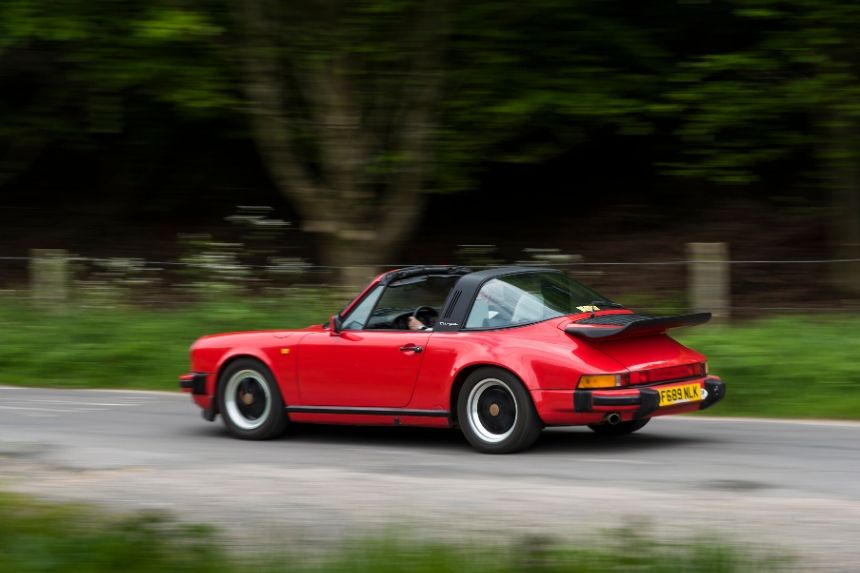
How can we help?
Run by dedicated and friendly Porsche enthusiasts, we are here to help you get the most out of owning your Porsche. We have over 30 model-specific Registers, each run by enthusiastic volunteers and technical experts who will be happy to assist you with any questions you may have. Click here to join Porsche Club GB.
find out more